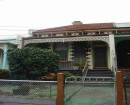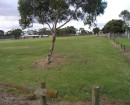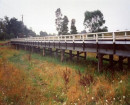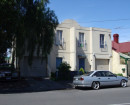Avoca Soldiers Memorial
High Street AVOCA, PYRENEES SHIRE
-
Add to tour
You must log in to do that.
-
Share
-
Shortlist place
You must log in to do that.
- Download report
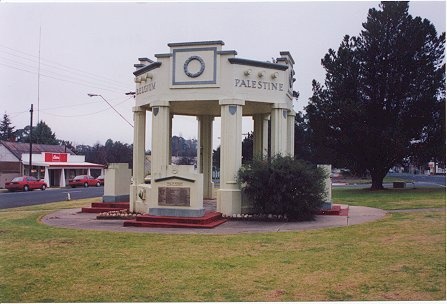






Statement of Significance
Significance Type: Local
The Avoca war memorial is an octagonal structure supported by four columns and dating from 1921. It has significance for its associations and landmark qualities.
The Avoca war memorial is of great symbolic significance to the community as a reminder of all local residents who fought in the world wars and particularly those who lost their life. Its striking design and its location in the centre of Avoca's main street and have made it a local landmark.
-
-
Avoca Soldiers Memorial - Historical Australian Themes
Community life
Avoca Soldiers Memorial - Physical Description 1
The War Memorial is an octagonal building of rendered brick supported on eight columns with rounded engaged columns on the central section of each. At the top of the rounded section is a shield decoration. The entire column terminates in a flat capital. Above the columns is a frieze which rises to a stepped parapet with every second side having a rectangular panel in the parapet and the lower intermediate panels having the names of the three main battlefields on which fought the volunteers from Avoca: Gallipoli, France, Palestine, and Belgium.
The memorial can be entered on four sides with the entry ways guarded by freestanding granite tablets which are inscribed with the names of those who served in the First World War. Low walls on the remaining four faces each carry a soldier's helmet and pack in relief.
The memorial is a very simply detailed monument based on a classical model. While taking a classical form it has stripped away most references to classical detailing. Early photographs show it set in small well planted garden beds edged in quartz stones and protected by woven wire fences.Veterans Description for Public
Avoca Soldiers Memorial - Veterans Description for Public
The Avoca War Memorial is located in the centre of High Street.The memorial comprises of an octagonal building of rendered brick, supported on eight columns with rounded engaged columns on the central section of each. At the top of the rounded section is a shield decoration. The entire column terminates in a flat capital. Above the columns is a frieze which rises to a stepped parapet with every second side having a rectangular panel in the parapet and the lower intermediate panels having the names of the three main battlefields on which fought the volunteers from Avoca: Gallipoli, France, Palestine, and Belgium.
The memorial can be entered on four sides with the entry ways guarded by freestanding granite tablets which are inscribed with the names of those who served in the First World War. Low walls on the remaining four faces each carry a soldier's helmet and pack in relief. The war memorial is a very simply detailed monument based on a classical model. While taking a classical form it has stripped away most references to classical detailing. Early photographs show it set in small well planted garden beds edged in quartz stones and protected by woven wire fences.During the First World War, 137 men from the Avoca area volunteered for the armed services and of this number 29 were killed. In response, it was decided to erect a memorial in the main street plantation and a Local Soldiers Memorial Committee was formed. The first appeal for funds was made in March 1918.
In 1920 the Committee advertised for the submission of designs. Obviously the response was not overwhelming for a meeting in September 1920 was adjourned to allow designers more time to submit their plans.
An octagonal design for the memorial was finally chosen at a meeting held on 7 June 1921 and work commenced. A local resident, Robert Kaye, donated a quantity of bluestone towards its construction. The memorial was finally completed at a cost of around £1800, the whole amount being raised by public subscription. It was unveiled during a 'Back to Avoca' held in November 1921. The 'Little Digger' Billy Hughes, the prime minister, was even invited as guest of honour but was unable to attend.The Memorial was later rededicated to include the Second World War.
Heritage Study and Grading
Pyrenees - Avoca Shire Heritage Study
Author: W Jacobs & K Twigg
Year: 1995
Grading: Local
-
-
-
-
-
FORMER AVOCA COURT HOUSE
 Victorian Heritage Register H1460
Victorian Heritage Register H1460 -
AVOCA PRIMARY SCHOOL
 Victorian Heritage Register H1622
Victorian Heritage Register H1622 -
LOCK-UP
 Victorian Heritage Register H1660
Victorian Heritage Register H1660
-
10 Down Street
 Yarra City
Yarra City
-
-







